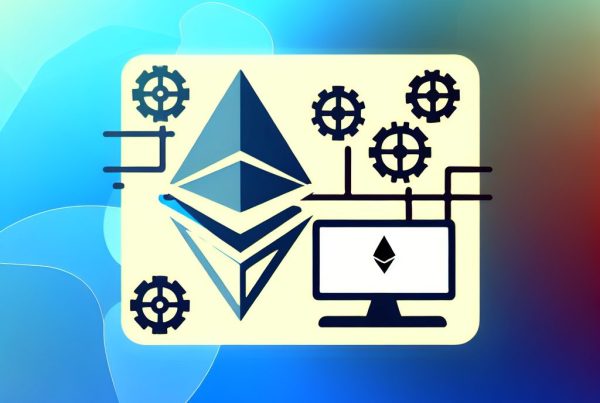Understanding Gasless Transactions in the Cryptocurrency Industry
The cryptocurrency landscape is constantly evolving, with new technologies and methodologies emerging to enhance user experience and streamline processes. One of the most intriguing developments in this space is the concept of gasless transactions. This article delves into what gasless transactions are, how they work, their benefits, and their implications for the future of cryptocurrency.
What Are Gasless Transactions?
Gasless transactions refer to cryptocurrency transactions that do not require the sender to pay transaction fees, commonly known as “gas.” In traditional blockchain networks, users must pay gas fees to incentivize miners or validators to process and confirm their transactions. However, gasless transactions eliminate this requirement, allowing users to interact with blockchain networks without the burden of transaction costs.
How Do Gasless Transactions Work?
Gasless transactions typically operate through a mechanism known as meta-transactions. In a meta-transaction, a third party, often referred to as a relayer, pays the gas fees on behalf of the user. Here’s a simplified breakdown of how this process works:
- User Initiates Transaction: The user creates a transaction request but does not sign it with their private key.
- Relayer Receives Request: The transaction request is sent to a relayer, which is a service that is willing to pay the gas fees.
- Relayer Signs and Sends: The relayer signs the transaction with its own key and submits it to the blockchain, paying the gas fees.
- Transaction Confirmation: The transaction is processed and confirmed on the blockchain, with the relayer potentially charging the user a fee in another form, such as a small percentage of the transaction amount.
Benefits of Gasless Transactions
Gasless transactions offer several advantages that can significantly enhance user experience and broaden the adoption of cryptocurrencies:
- Lower Barriers to Entry: By removing gas fees, gasless transactions make it easier for newcomers to enter the cryptocurrency space without the fear of incurring costs.
- Enhanced User Experience: Users can interact with decentralized applications (dApps) without worrying about managing gas fees, making the process more seamless.
- Increased Adoption: Businesses can incentivize users to engage with their platforms by covering transaction costs, leading to higher user retention and engagement.
- Flexibility in Payment Models: Relayers can implement various payment models, such as charging fees in tokens or offering rewards for using their services.
Real-World Applications of Gasless Transactions
Gasless transactions are gaining traction across various sectors within the cryptocurrency ecosystem. Here are some notable applications:
1. Gaming
In the gaming industry, gasless transactions can significantly enhance user experience. Players can make in-game purchases or trade assets without worrying about gas fees. For instance, platforms like Enjin utilize gasless transactions to allow gamers to buy, sell, and trade virtual goods seamlessly.

2. Decentralized Finance (DeFi)
DeFi platforms are increasingly adopting gasless transactions to attract users. By covering gas fees, these platforms can encourage more users to participate in lending, borrowing, and trading activities. For example, Gnosis has implemented gasless transactions to facilitate trading on its platform, making it more accessible to a broader audience.
3. Non-Fungible Tokens (NFTs)
The NFT market has also seen the benefits of gasless transactions. Artists and creators can mint and sell NFTs without incurring high gas fees, which can be a barrier to entry. Platforms like OpenSea are exploring gasless options to enhance user engagement and streamline the minting process.
Challenges and Limitations of Gasless Transactions
While gasless transactions present numerous benefits, they also come with challenges that need to be addressed:
- Reliability of Relayers: The success of gasless transactions heavily relies on the availability and reliability of relayers. If a relayer goes offline or becomes untrustworthy, it can disrupt the transaction process.
- Security Concerns: Users must trust relayers to handle their transactions securely. If a relayer is compromised, it could lead to loss of funds or sensitive information.
- Regulatory Issues: The regulatory landscape surrounding gasless transactions is still evolving. As these transactions gain popularity, they may attract scrutiny from regulators.
Future of Gasless Transactions
The future of gasless transactions looks promising as more projects and platforms explore this innovative approach. As the cryptocurrency industry matures, we can expect:
- Increased Adoption: More dApps and platforms will likely adopt gasless transactions to enhance user experience and attract new users.
- Improved Infrastructure: The development of robust relayer networks will enhance the reliability and security of gasless transactions.
- Regulatory Clarity: As gasless transactions become more mainstream, regulatory bodies may provide clearer guidelines, fostering a safer environment for users.
FAQs About Gasless Transactions
What is the main advantage of gasless transactions?
The primary advantage of gasless transactions is that they eliminate the need for users to pay gas fees, making it easier for newcomers to engage with blockchain technology without financial barriers.
How do relayers make money from gasless transactions?
Relayers can charge users a fee in various forms, such as a percentage of the transaction amount or through alternative payment models, allowing them to sustain their operations.
Are gasless transactions secure?
While gasless transactions can be secure, they depend on the reliability of relayers. Users must choose reputable relayers to minimize security risks.
Can gasless transactions be used on all blockchain networks?
No, gasless transactions are primarily implemented on specific blockchain networks that support meta-transactions. Ethereum is one of the most notable examples, but other networks are also exploring this feature.
Conclusion
Gasless transactions represent a significant advancement in the cryptocurrency industry, offering a user-friendly alternative to traditional transaction methods. By eliminating gas fees, these transactions lower barriers to entry, enhance user experience, and promote broader adoption of blockchain technology. As the ecosystem continues to evolve, we can expect gasless transactions to play a crucial role in shaping the future of digital finance.
For the latest updates on cryptocurrency news and price tracking, visit Bitrabo. Follow me on social media for more insights: X, Instagram, Threads.
Disclaimer: This article is for informational purposes only and should not be considered financial advice. Always conduct your own research before making investment decisions.
The Crypto Watchlist of the Week 🔎
Subscribe to receive expert-curated projects with real potential—plus trends, risks, and insights that matter. Get handpicked crypto projects, deep analysis & market updates delivered to you.


